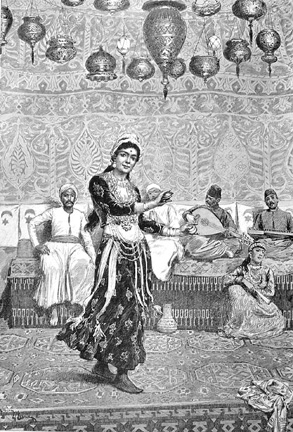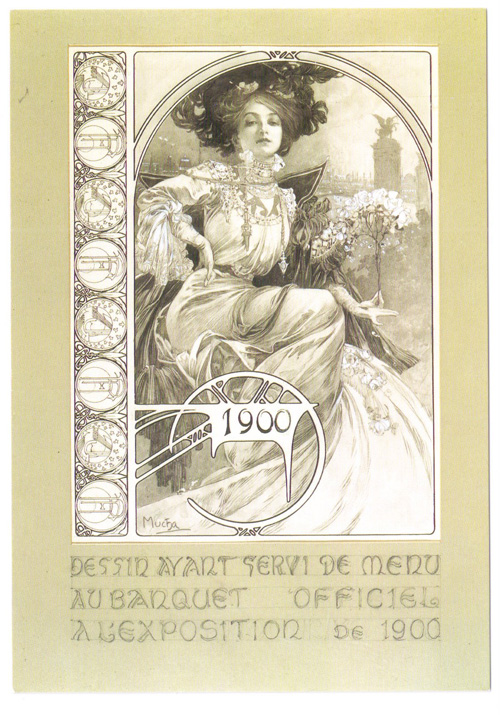Rosalind Williams, Dream Worlds
Dreams of Love and Wealth
Dreams of Love and Wealth -- It is neither necessary nor possible to catalog all the dreams exploited by modern business. Although their range is as boundless as that of the human imagination, the concepts already discussed should apply to them also, in a general way. One fantasy, however, is so powerful and pervasive that it deserves special mention-the desire for sexual pleasure. If dreams of distant places are materialized in exotic imagery and fairyland ones in electric-light displays, erotic dreams are incarnated in the female image. Once again the expositions provided a prophecy of the commercial exploitation of imagery. The belly dancers of the Rue du Caire at the 1889 fair and the glass-caged wax mannequins at the 1900 exposition attracted large crowds. Both female images had a compelling effect, but the dancer and mannequin were enticing in different ways to different audiences. Men gathered to see the sinuous, half-naked entertainer perform in the shadows of a cabaret, while women were held spellbound by the motionless, elegantly clothed models poised under electric lights. The charm of the dancer is closely related to the appeal of the exotic, for both invite liberation from ordinary conventions and attainment of a more romantic, exciting existence. The appeal of the wax mannequin; on the contrary, is that of a fairytale princess, who is coldly beautiful and proudly remote. The images imply astartling contrast between male and female fantasies, between what men want women to be like and what women want to be like. Can these contrary images be reconciled, in a woman at once exotic and ethereal, at once sensual and remote, at once harem slave and princess? "La Parisienne" suggests that they can be. This penultimate female, the symbol of the 1900 exposition, was perched atop the Monumental Gateway, an icon both sexy and remote, goddess and slut, and she resembles the women who were portrayed on advertising posters all over Paris in that era when these posters became a significant art form. Indeed, the triumph of French poster art, according to Georges d'Avenel (of whom more will be said shortly), is its mating of contradictory female images in its ceaseless repetition of "the representation of a female being with teasing features, half fairy princess and half 'streetwalker.' " The preferred model of the Chéret brothers, masters of poster art, is "this Parisienne, of a desirable height, with a hieratic smile, pagan goddess intoxicated with her own apotheosis." This "illusory type" always wears the same expression whether she is shown on horseback, at the beach, smoking, writing to advertise an ink or carrying a lamp to publicize mineral oil, always "lending the charm of her petite person to all the offerings of business."
If this creation is not exactly a triumph of art, it is surely a triumph of decor. This "type" (which also appeared in all the movie houses) appeals to the fantasies of both sexes at the same time. Just as cinema programs include something for everyone, business wants to deploy images that appeal to as many consumers as possible. The aim of mass publicity is to make the dream world as uniform as possible in order to entice as many people as possible. The creation of a hybrid streetwalker-princess is one way to achieve this goal.

Danser at Egyptian Cafe Rue du Caire [Cairo Street] at the 1889 Paris Exposition, Monde illustre

Alphonse Much, Dessign for the Menu of the Official Banquet at the 1900 Paris Exposition